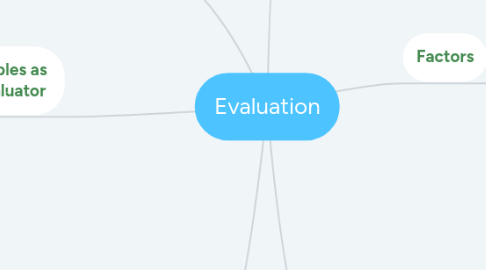
1. Aspects
1.1. (i) Objectives,
1.2. (ii) Learning experiences,
1.3. (iii) Learner appraisal and the, and
1.4. (iv) Relationship between the three.
2. Principles as an evaluator
2.1. Specify what will be evaluated
2.2. Selection of the technique
2.3. Multiply items to evaluate
2.4. Awareness of limitations
3. Principles for evaluators
3.1. Systematic Inquiry
3.1.1. Conducted by evaluators about what is being evaluated
3.2. Competence:
3.2.1. Evaluators provide competent performance to stakeholders.
3.3. Integrity / Honesty:
3.3.1. Ensured during the entire process
3.4. Respect for People:
3.4.1. Security, dignity and self-worth of the respondents, program participants, clients, and other stakeholders with whom it is interact.
3.5. Responsibilities for General and Public Welfare
3.5.1. Evaluators articulate and take into account the diversity of interests and values that may be related to the welfare.
4. Definition
4.1. Process by which a teacher knows how much as student has learned from a specific topic.
4.2. For Thorndike and Hegan evaluation is an inclusive, informal and intuitive judgement of pupil’s progress. It describes something in term of selected attributes and judging the degree of acceptability or suitability of that which has been described.
5. Factors
5.1. Language Knowledge School studies Culture
6. Classification
6.1. Function
6.1.1. Diagnostic
6.1.1.1. What the students know at the topic
6.1.2. Formative
6.1.2.1. What the student is learning
6.1.3. Summative
6.1.3.1. What the student has learned
6.2. Agent
6.2.1. Autoevaluation
6.2.2. Heteroevaluation
6.2.3. Peer evaluation
6.3. Comparison
6.3.1. Rules and criteria
6.4. Approach
6.4.1. Cualitative and cuantitativa
6.5. Moment
6.5.1. Beginning, process, final and differed
